#oxalis purple shamrock
Text

Lucky After Dark
Watercolor On Birch Panel
2023, 11"x 14"
Purple Oxalis, Shamrocks
#art#nature#flowers#floral#watercolor#artists on tumblr#minimalism#artwork#painting#oxalis#purple#purple shamrock#shamrock#houseplants#pink#botany#flower#foilage#indoor plants#plants#wildflowers
132 notes
·
View notes
Text

Violet Wood Sorrel
Oxalis violacea
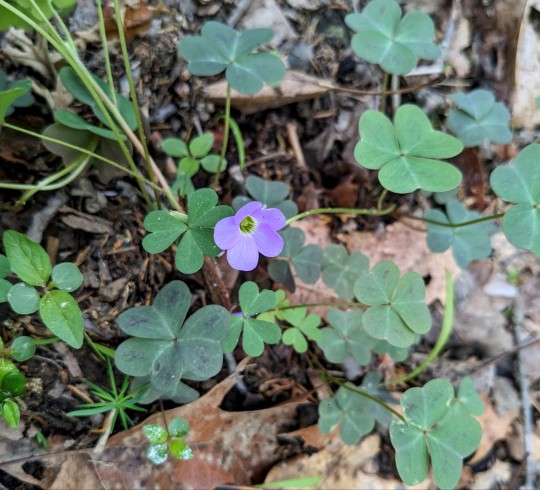
This beautiful oxalis violacea with showy, soft violet blooms is a perennial species native to the eastern and central United States.
May 12th, 2023
Jefferson County, Missouri, USA
Olivia R. Myers
@oliviarosaline
#botany#plants#flowers#Oxalis violacea#oxalis#shamrocks#clovers#Oxalidaceae#dicots#nature#forest floor#forest#woods#naturecore#fairycore#cottagecore#Missouri#Hiking Missouri#hiking#sour trefoil#exploring#exploring the woods#the ozarks#ozarks#Missouri nature#violet#violet flowers#purple#purple flowers#native plants
31 notes
·
View notes
Text
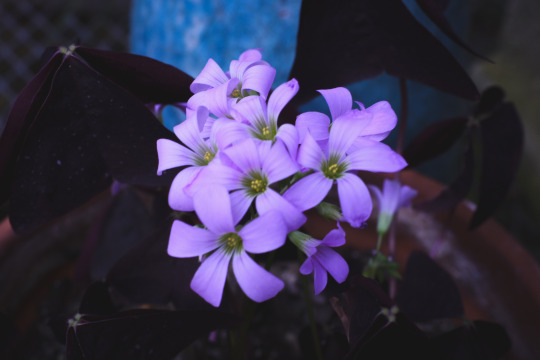
oxalis blooms.
#oxalis#oxalis triangularis#flowers#blooms#false shamrock#purple#plants#perennials#plantblr#wood sorrel#my plants
16 notes
·
View notes
Text
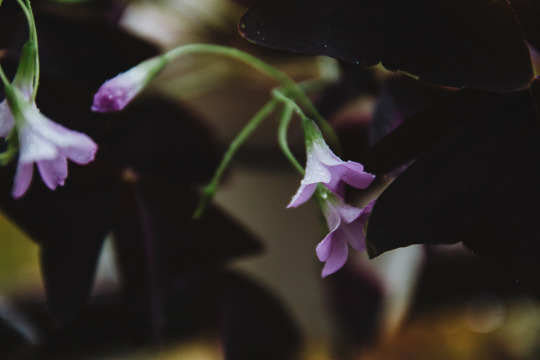
Embrace the storm and rise within
@ Dragana Dimitrijević
11 notes
·
View notes
Text
I killed two of my office plants by accident. Should have watered them before going on vacation, didn't make it to the office before I left due to circumstances.

The dead plant recognizers among you will see that these two are, however, famously dramatic plants. On the left, oxalis triangularis, purple shamrock. It droops when it needs more water, or less water, or is too crowded, or got jostled, or a horoscope writer used the wrong punctuation in a newspaper. It is also quite good at recovering from death through dehydration. I'm not worried about the shamrock.
I'm worried about the spathiphyllum, peace lily, on the right. Which will droop if it's slightly too dry or too wet, and whose leaves will get crispy tips if you don't use water conditioner, and it won't flower unless you hold it 5mm from the sun's corona or give it planty hrt. Because those leaves aren't drooping, they're not crispy, they're dead. And every planty internet guru except one said "nope, goner, toss it."
What I have learned as a plant killer is that plant isn't dead until it's been dead in moist soil for at least a week, especially if there's still something green on it. So I soaked the soil on these, drained the excess water, and gave it some time.

A few of the shamrock's stems stayed hydrated, so I left the leaves near the window. But the dead lily straight up rose from the grave in 5 days. It wasn't pretty, but something was happening, so I gave it more time before I tossed it and replaced it with the spider plant pups I've got at home.

Yep, that's a new leaf. What has taken this plant 3 months usually has happened in 8 days. Three existing ones are clinging too life, too.
#house plants#plant parent#peace lily#spathiphyllum#purple shamrock#oxalis triangularis#plant neglect#now open for good zombie name suggestions for this little champ#working title: Lazarus#stories from work
6 notes
·
View notes
Text
i have these new plants that i got right before and right after my top surgery and they're both pushing out new growth after our first frost in hardiness zones they're not built for after a severe depressive episode where i neglected to care for them and i just. wow. my mental health is usually directly tied to how my plants are doing so if that could hurry up and transfer over to me that'd be great
#they are a peace lily and a purple shamrock if u want to know#i'm not good with corm/rhizome plants so these are New Adventures for me#i split the PL in two and downsized the pots#and the oxalis is struggling bc it's in a pot without a hole but it's pushing out two new heads so#the peace lillies also got attacked by bean... so they had to have some extreme hair cuts#bean is fine she's eaten staples before#i stg this cat has a stomach made of steel#they each have two new leaves coming#my post
1 note
·
View note
Photo

O x a l i s Wishing you all a Merry Christmas! Here’s my gift for today 🎅🧑🎄 . Original artwork © Mike A. Calles 2022. Procreate + iPad Pro. . #leaves #leaves2022 #illustration #procreate #ipadart #mikeacalles #xlopp #oxalis #purple #shamrock #lucky #merrychristmas #christmas #xmas https://www.instagram.com/p/CmlqdnAqoCj/?igshid=NGJjMDIxMWI=
#leaves#leaves2022#illustration#procreate#ipadart#mikeacalles#xlopp#oxalis#purple#shamrock#lucky#merrychristmas#christmas#xmas
0 notes
Photo
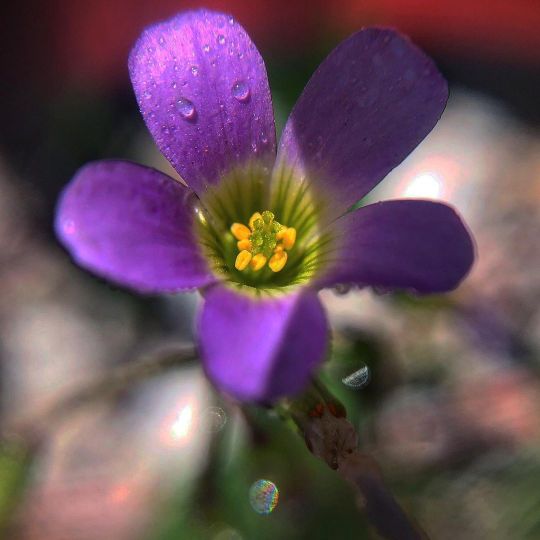
Flor del trébol que no es trébol 🍀 ☘️ 🌸. . . . . . . . . . . . . . . . . . . #oxalis #trebol #shamrock #bloom #blooms #blooming #blooming_petals #flores #flor #floral #flowers #flower #flower_daily #flowerphotography #flowershop #floweroftheday #flowersofinstagram #flowerslovers #purple #petals #picoftheday #nature #naturaleza #naturephotography #naturelovers #garden #gardening #gardendesign #water #watercolor https://www.instagram.com/p/Cf4QuP4FPjK/?igshid=NGJjMDIxMWI=
#oxalis#trebol#shamrock#bloom#blooms#blooming#blooming_petals#flores#flor#floral#flowers#flower#flower_daily#flowerphotography#flowershop#floweroftheday#flowersofinstagram#flowerslovers#purple#petals#picoftheday#nature#naturaleza#naturephotography#naturelovers#garden#gardening#gardendesign#water#watercolor
0 notes
Text
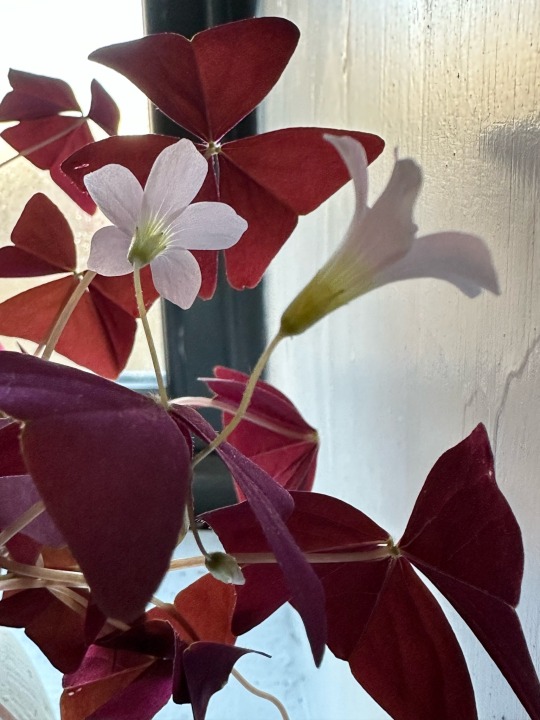
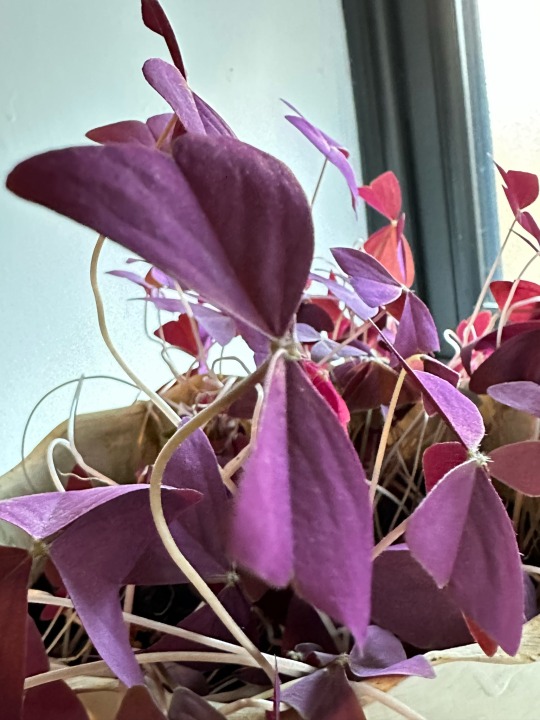

Plant of the Day
Tuesday 7 March 2023
On a cafe windowsill in the Unorthodox Roasters in Kinross the houseplant Oxalis triangularis subsp. papilionacea (purple leaf false shamrock, purple wood sorrel) was growing. This frost-tender bulbous plant can be kept year-round in a cool conservatory or room producing purple foliage and pale-pink flowers. It requires a moisture retentive but well-drained growing media.
Jill Raggett
#oxalá#purpleleaffalseshamrock#purplewoodsorrel#purplefoliage#pinkflowers#plants#houseplant#container#windowsill#cafe#writtledesign#horticulture#kinross#scotland
133 notes
·
View notes
Text
I saw someone talking about "I appreciate the ecological benefits of a diversified lawn, but I live in tick country and high grass is a Very Bad Idea," and it made me wonder what lawns were like in their area. Mowing itself does not kill weeds! And even if they were talking about letting the non-grass plants get big enough to flower so the pollinators can actually benefit from them, there are plenty of fun plants that are either naturally low-growing (I'm defining "low-growing" as "shorter than a pulled-up crew sock") or can be mowed down to that height without injuring them.
This list will focus on the temperate zone because that's the only place I've lived.
Sweet alyssum: this is a garden flower, so you probably shouldn't expect it to stand up to too much foot traffic, but I have seen it in lawn mixes. It's a cute, obliging hardy annual adapted to a variety of temperate climates, smells good, self-sows, and is attracted to pollinators.
Wild violets/Johnny-Jump-Ups: Yuri flowers! Many species of cute little pansy-shaped things found all over the temperate regions of Eurasia and the Americas. Adapted to a wide variety of biomes, although many of them like some shade. Some are edible and I haven't heard of any that are dangerously poisonous, but look up your specific species before you start chomping.
Clover: Red clover is pretty and useful but probably too rangy if you need to keep your lawn below the top of your socks. White clover and hop clover (the tiny yellow ones) are more compact. Bees love it.
Vetch: There are hundreds of vetches out there, some of them way too big for our purposes, so we'll focus on the little weedy ones. These guys are members of the bean family (closely related to lentils and fava beans) with pretty sweet-pea-like flowers in a variety of colors. The most common variety where I live is fuchsia, but there's also a tiny species with pink and cream flowers. Being legumes, they're nitrogen-fixers.
Speedwell: Several species of low-growing plants of the genus Veronica with little blue flowers. Add some variety to your lawn's color palette.
Prunella/Purple Dead-Nettle: These are technically two different plants from two different genera, but apparently the plant I've known since childhood as Prunella looks more like Purple Dead-Nettle? Well, neither of them are toxic, so there's no great practical hazard to mixing them up. These are members of the mint family (but don't smell minty), modestly attractive in an herby kind of way, hardy and adaptable but easier to weed out of where you don't want them than mint proper tends to be.
Mint: Mint can get a bit gangly, but once it's well-established it doesn't mind being mowed - and it does smell wonderful after being cut or trampled! Potentially invasive.
Wild strawberries: If the wild strawberries native to your area reliably bear fruit, congratulations! Mine do not. But they're picturesque little plants anyway.
Chickweed: A sprawling plant with long gangly stems and tiny white flowers. Edible, and one of the traditional seven herbs in Japanese New Year congee.
Oxalis: Cute little shamrock-looking plants (although they're more closely related to starfruit than clover). Wild specimens can have green or dark red foliage. There are cultivated varieties with more spectacular flowers.
English daisies: tiny little daisies. The wild variety has white single flowers with yellow centers, but I've seen the cultivars (bigger fluffier flowers in various shades of pink as well as white) also do well in a lawn.
Buttercups: buttercups like wet feet, and add a cheery touch to any particularly moist or poorly drained parts of your yard. Some of the wild species are potentially invasive, so keep an eye on them for possible unseemly expansionist tendencies.
All these plants will give your lawn a picturesque charm, feed the butterflies and bees, and (hopefully) camoflage the dandelions and plantain.
3 notes
·
View notes
Text
After I finished Etrian Odyssey 2 Untold, I was craving more of that Etrian Odyssey goodness so much that I went ahead and jumped into Etrian Odyssey IV, even though I'd told myself I'd hold off on starting anything new for a while. One aspect I wasn't sure I'd get much out of, though, was creating my own party rather than experiencing a set story mode. That was, of course, foolish; I am having a blast. I put a lot of thought into the backstory and dynamics of my crew and have come to love them deeply. So, indulge me for a while, as I introduce... Guild Trefoil!
Guild Trefoil, from the Latin ‘trifolium’, meaning three-leaved plant. This is another name for the clover plant, and also refers to various clover-inspired designs, such as those on heraldic crests. At the core of the guild are the three childhood friends Clover, Calyx, and Patrick.
Ship: Oxalis, another clover-like plant, colloquially known as a false shamrock. In EOIV, all airships are imitations of an original that fell to the ground long ago.
Clover, Sniper: Trefoil’s leader from the back. A fairly serious person. Orphaned at a young age when her parents set out to be Yggdrasil explorers in Armoroad and never returned. She was raised in a small village, at an orphanage for children left behind by explorer parents. She does not blame her parents; as world economies centre more and more around these mysterious labyrinths, other opportunities dry up. Her parents were doing all they could. However, she does hold a certain distaste for those who treat Yggdrasil exploration like a fun past-time, and for those who seek to profit from it at a higher level. She now sets out for Yggdrasil herself in the hopes of sending funds back to the orphanage. As someone with a high level of attention for detail, she is also in charge of the map.
Like the plant, Clover is small but resilient. (Portrait: female, pink.)
Calyx, Fortress: Clover’s carefree best friend. She, too, grew up in the orphanage for children whose parents died as explorers. Growing up surrounded by other children with competing needs led her to become patient and reluctant to complain. However, she is also slow to advocate for herself, something which Clover is quick to remedy. Calyx feels deeply indebted to Clover for all of her support throughout their lives.
Calyx is the collective term for sepals, a part of a plant that functions to protect the flower in bloom. (Portrait: female, redhead.)
Patrick, Dancer: childhood friend to both Clover and Calyx, also an orphan. Gay, maybe a little slutty. Definitely likes to have fun. Developed in a different way from Calyx in response to their environment; because he lacked discipline growing up, he isn’t too responsible and doesn’t tend to take things seriously. To everyone’s surprise, it was his idea to head for Tharsis and seek Yggdrasil. Although he pitched it to Clover as a way to help the increasingly poverty-stricken orphanage where they grew up, his real reason is tied to the boy he likes, Leif.
Patrick is named for Saint Patrick, who is strongly associated with the shamrock, a type of clover. The shamrock may have also been associated with the regenerative powers of nature; as a Dancer, Patrick is the party’s only healer. (Portrait: male, purple hair.)
Leif, Nightseeker: with a sword in one hand and a dagger in the other, Leif is Trefoil’s deadliest member. He seems to have had some training in combat before the beginning of the journey. However, his background is shrouded in mystery. He came to Clover’s village badly injured, barely kept alive by his sister, Kura. As he was tended to by Clover, Calyx, and Patrick, he became especially close with Patrick, and disclosed that he and his sister were on their way to Tharsis to seek out Yggdrasil. However, he would not explain why. He shared that he intended to head out again once he was healthy; Patrick did not see this ending well and offered to accompany him, soon roping his friends into it as well. Leif is a stoic figure, but occasionally lets his guard down and shows his true tenderness and sensitivity. He grows closer with Patrick by the day, but is nonetheless still guarded with him.
The name Leif is most closely associated with Leif Erikson, a Norse explorer who sought new lands. It also recalls a leaf, in keeping with our plant theme. (Portrait: male, red coat.)
Kura, Runemaster: Leif’s sister, who is even more taciturn than he is. Her greatest show of emotion seen by the party thus far was in the moments they first met, when she begged them to save Leif’s life. Since then, she has shown nary a smile. That said, she is very perceptive. This aids her in combat, as she is talented in reading the enemy, but she can also glean a lot about a person’s nature just by watching them. Like Leif, she comes to the group with prior training, showing great prowess with elemental magic. Also like Leif, she refuses to share anything deeper about herself. She shares her brother’s goals, but will not reveal them.
Named for the kura clover, or Trifolium ambiguum, a type of clover that is mostly white with red underneath, a similar colour scheme to her portrait art. (Portrait: female, short blue hair.)
(EOIV portraits can be viewed here, for reference.)
#personal#Etrian Odyssey#Etrian Odyssey IV#in hindsight it's like... obviously.#OBviously i would have a blast with this stuff#part of the fun here is... i don't know where EOIV's story is gonna go!#so the mysteriousness i've set up with Leif and Kura leaves room to give them relevance where i see fit
10 notes
·
View notes
Text
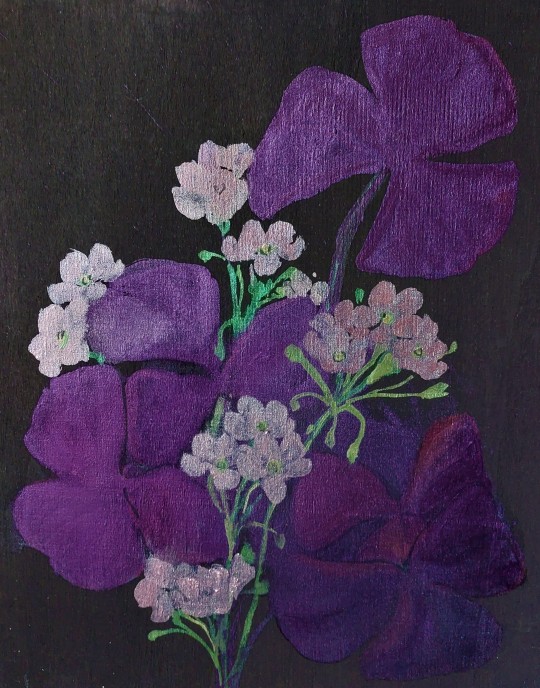
Lucky After Dark
Watercolor On Birch Panel
2022, 11"x 14"
Purple Oxalis, Shamrocks
#art#plants#nature#artists on tumblr#flowers#floral#watercolor#painting#minimalism#purple shamrock#shamrock#oxalis#artwork#purple#pink#artblr#artist#houseplants#plantblr#botany#goth cottagecore#cottagecore aesthetic#cottagecore#artists
71 notes
·
View notes
Photo

Lá Fhéile Pádraig Sona Duit!
(“Happy Saint Patrick’s Day to you” in Gaelic)
Saint Patrick’s Day is a celebration of Irish culture and heritage held annually on March 17th in most English-speaking countries and regions with an Irish diaspora. The shamrock is the symbol of Ireland but what, botanically speaking, is a “shamrock”?
The word comes from the Irish Gaelic word “seamrog” which means “little clover”, but this is simply a common name that can apply to several clover-like plants native to Ireland. All clover species belong to the genus Trifolium, which is a member of the Fabaceae plant family which includes peas and beans. The genus name Trifolium literally means “three leaves” in Latin and clovers almost always bear a leaf composed of three equally sized leaflets. Four leafed clovers can occur in almost all clover species and are thought to be the result of a recessive genetic mutation due to their rarity. The three leaflets symbolise the Holy Trinity in Irish culture, and it is said Saint Patrick used the plant to help explain Christian teaching during his mission to convert the Irish to Christianity.
There is no single species exclusively officially known as a “shamrock”. Several clover species are commonly called shamrocks in Ireland, including the Red Clover (Trifolium pratense), White Clover (Trifolium repens), Purple Clover (Trifolium pratense purpureum), and Lesser Trefoil (Trifolium dubium). An edible wild plant called Wood Sorrel (Oxalis acetosella) is also commonly called a shamrock. Despite the visual similar to clover leaves, the Wood Sorrel belongs to a different plant family and is only distantly related to true clovers.
If you’re putting up shamrock decorations or wearing festive clothes adored with shamrocks today, see if you can decide which species is the true shamrock.
#katia_plantscientist #plants #botany #botanical #botanicalphotography #saintpatricksday #saintpatricksday2023 #ireland #irish #irishculture #nature #clover #woodsorrel #whiteclover #redclover #trefoil #shamrock #plantidentification #plantfacts #leaves #cloverleaf #green #saintpatrick #flowers #plantbiology #trifolium #fabaceae #oxalis #wildflowers #plantscience
#katia plant scientist#plants#botany#botanical#photosynthesis#saint patricks day#Ireland#irish folklore#nature#clover#wood sorrel#white clover#red clover#lesser trefoil#green#wildflower#oxalis#plant biology
7 notes
·
View notes
Text
I was able to sell a customer one of my favorite plants that I told her about for less than three dollars and I'm so happy for her. Goth garden plants need more love.
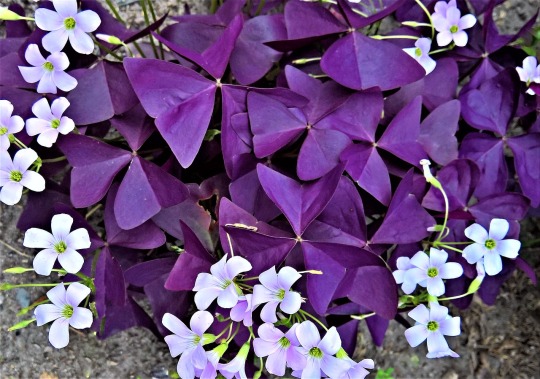
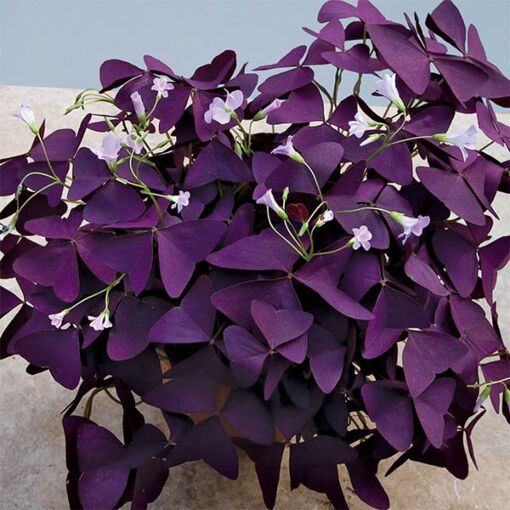
LOOK AT HER!!
Edit: This is a oxalis purple shamrock.
9 notes
·
View notes
Text
The false shamrock plant is a beautiful green and purple plant that originates from Brazil. Although it has large clover like leaves it isn’t in the clover family. False Shamrock also known as Oxalis triangularis is actually a rhizomatous wood sorrel plant. It spreads and grows through underground corms. If you would like growing and care information on how to grow and care for your very own glade shamrock plant head over to the link below
#falseshamrock#Brazilian plants#Brazil#Brazilian false shamrockplant#gardening#garden#gardenlife#indoorgarden#indoorplants#nature#plants
0 notes
Text
How to Grow and Care for a Shamrock Houseplant
0 notes